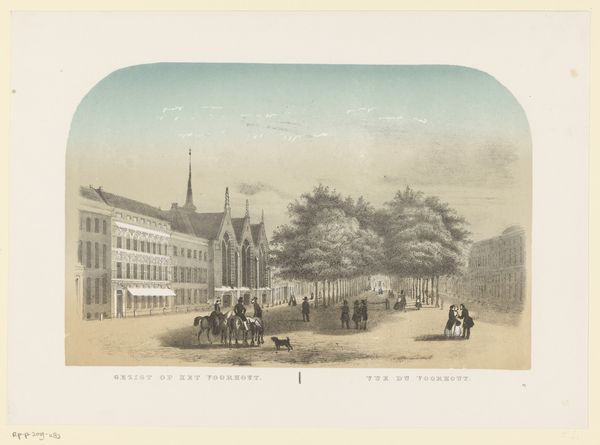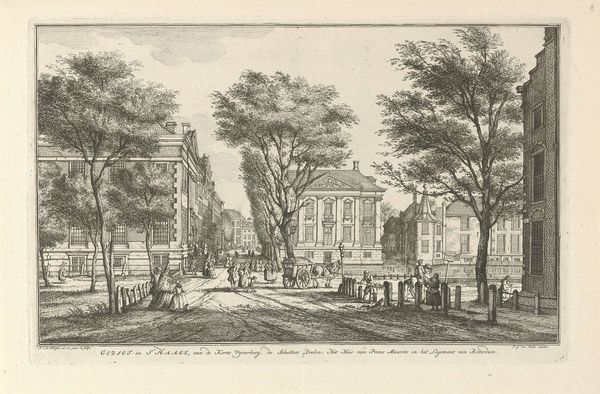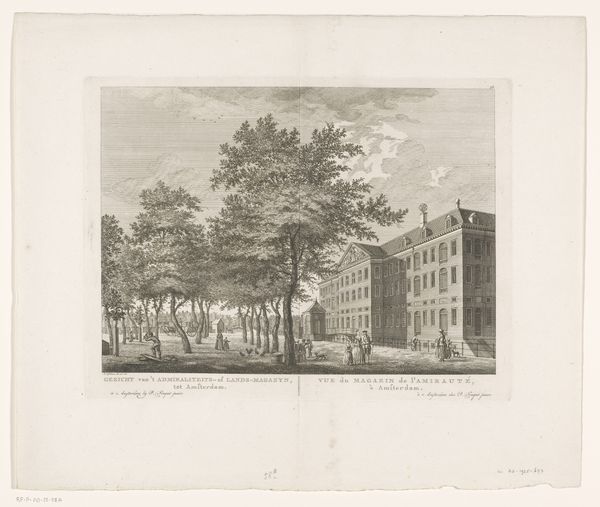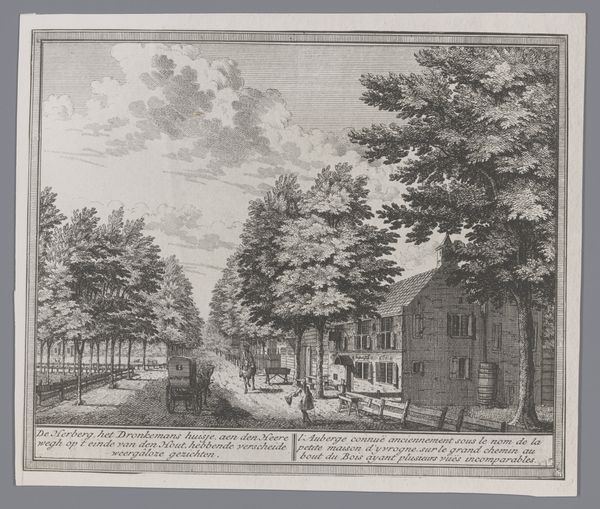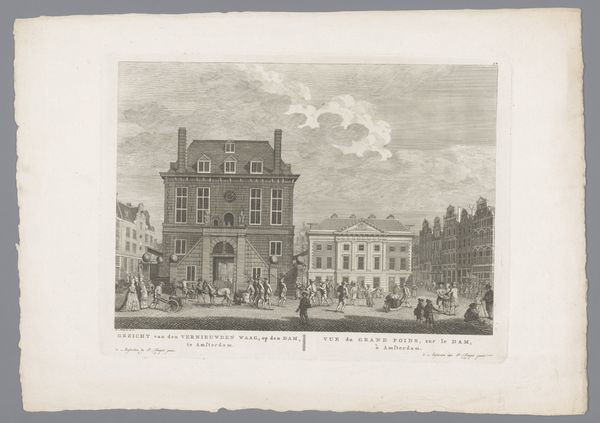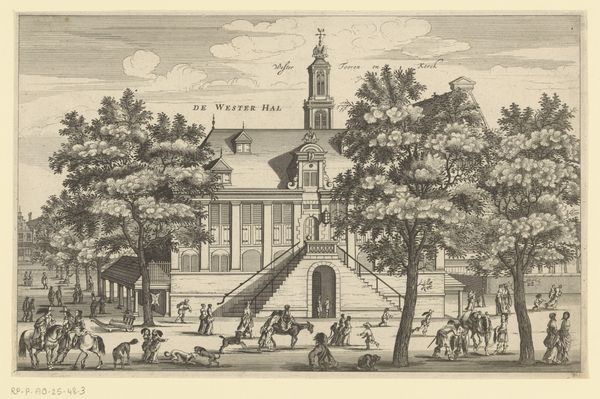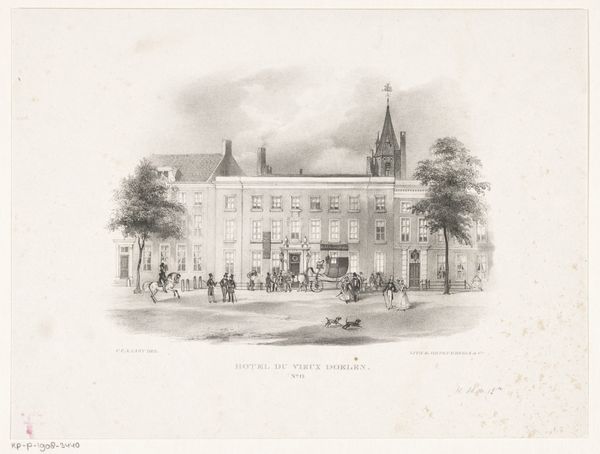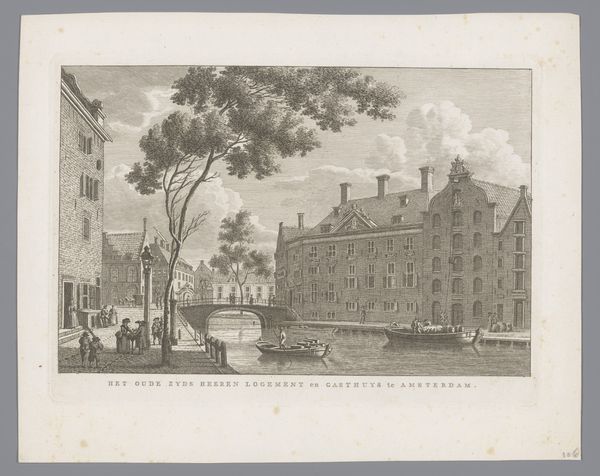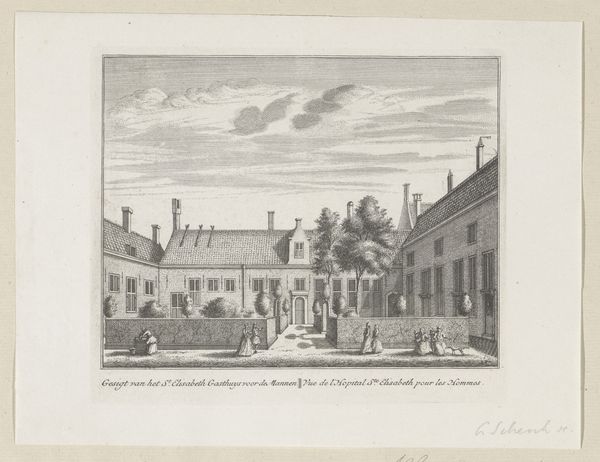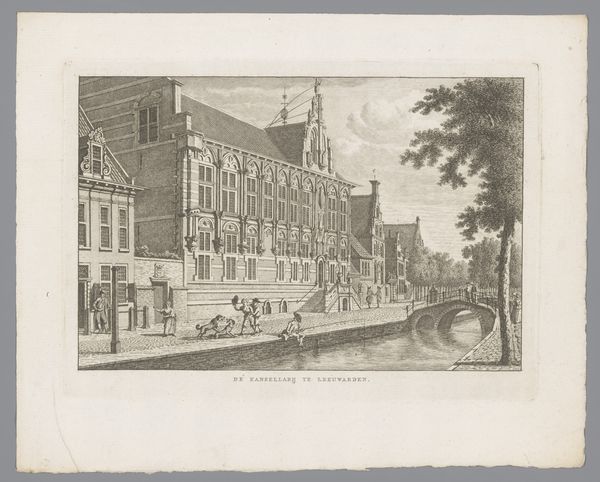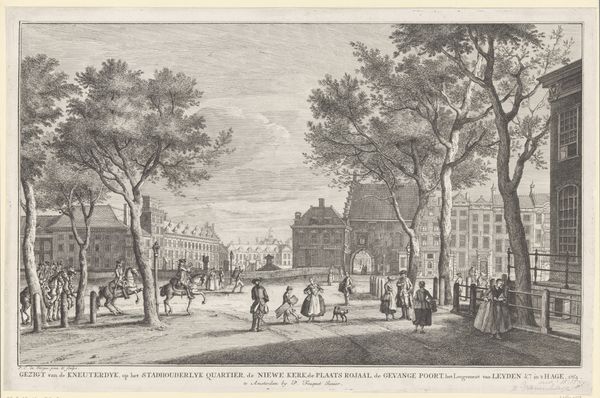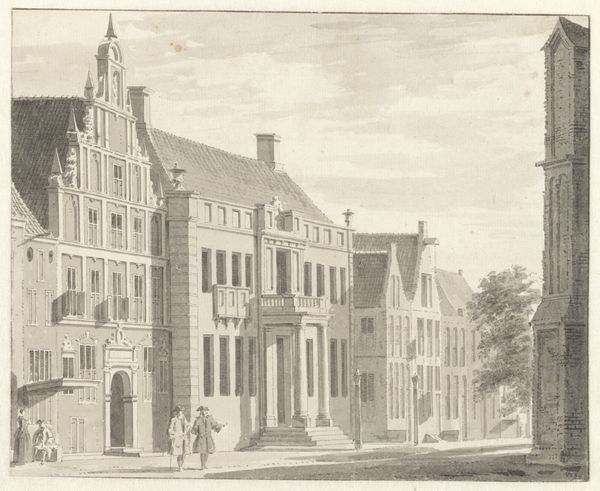
Sint-Annakerk en de Kweekschool voor de zeevaart in Amsterdam 1844 - 1848
0:00
0:00
drawing, print, etching, paper, pen, engraving
#
drawing
#
dutch-golden-age
# print
#
etching
#
old engraving style
#
paper
#
historical photography
#
19th century
#
pen
#
cityscape
#
genre-painting
#
street
#
engraving
#
realism
Dimensions: height 145 mm, width 225 mm
Copyright: Rijks Museum: Open Domain
Curator: Standing before us is "Sint-Annakerk en de Kweekschool voor de zeevaart in Amsterdam" by Johannes Hilverdink, created between 1844 and 1848. It's an etching and engraving, a detailed cityscape rendered with striking precision. Editor: It's somber, almost austere. The detailed rendering emphasizes the rigidity of the architecture. The street feels eerily quiet despite the few figures present. Curator: The print medium itself is significant. The ability to reproduce and distribute images like these speaks to the growth of a middle class eager to consume views of their own cities and the infrastructure that defined them. Note the textures Hilverdink achieves - the varying degrees of finish on each of the surfaces. Editor: And the work captures a critical juncture, doesn’t it? This is Amsterdam in the throes of industrial transformation. That smokestack in the distance hints at the burgeoning industries reshaping the urban landscape and, undoubtedly, creating new social strata and labor dynamics. Curator: Exactly. The drawing invites questions about urban development and social structures. The Sint-Annakerk was significant for housing the poor and needy, reflecting the stark contrasts within the growing city. We are dealing with two distinct sites. Editor: Those contrasts are subtly depicted. There’s a hierarchy present, visible not just in the architecture but in the implied narratives playing out. Who are those workers on the street versus the figures on the steps of that grander building to the right? What class differences do they suggest, and how does Hilverdink subtly reinforce or question those social divisions? Curator: Hilverdink likely catered to an audience that favored accuracy. Etchings allowed the circulation of views such as these to expand through urban centers, changing what art was and for whom it was produced. It provides key insight into the means and relations of artistic production at that time. Editor: It’s a fascinating look at 19th-century Amsterdam, isn't it? A window into a society grappling with its own evolution. It pushes us to consider the power dynamics inherent in urban planning, the social consequences of industrial growth, and the ways in which artists participate in the articulation of these societal shifts. Curator: Indeed. The artwork opens conversations about production, consumption, class, and the development of modern society itself. Editor: Leaving me to reconsider Amsterdam’s history with fresh eyes and perhaps, a more critical lens.
Comments
No comments
Be the first to comment and join the conversation on the ultimate creative platform.

